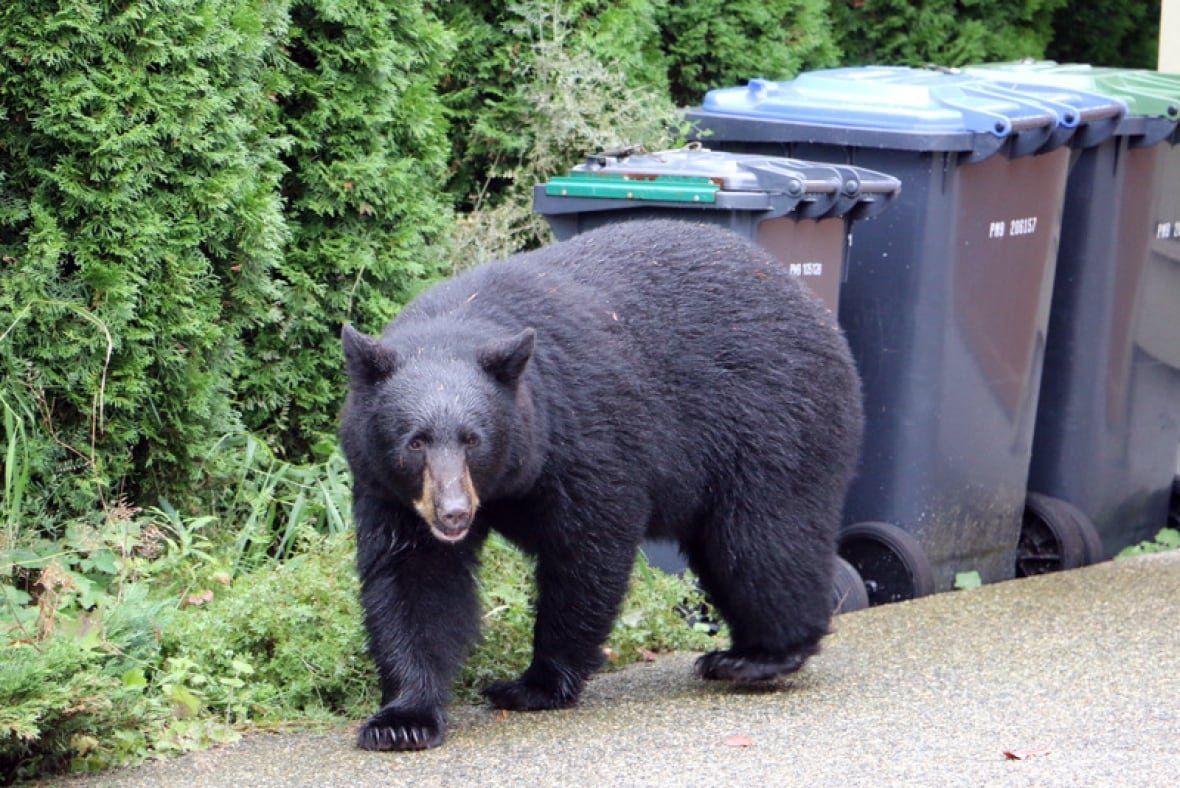Officials are urging residents to be alert and secure their garbage bins as B.C.’s bears wake up from their winter hibernation over the coming weeks.
There are between 120,000 and 150,000 black bears in the province, according to advocacy group WildSafeBC, and the dozy bears start getting more active in the spring after months of sleep.
Wildlife safety advocates and conservation officers are urging residents to be aware of their surroundings when out in the woods.
The City of Kamloops is rolling out a program to offer bear-resistant garbage bins throughout the city, as officials and advocates say unsecured garbage bins are the primary cause of human-bear conflict.
Port Moody has officially been given the province’s “Bear Smart” designation – as part of an effort to build communities where people and bears can coexist in urban environments. As CBC’s Michelle Morton reports, it comes after conservation officers killed a decade-high number of black bears last year.
“Especially now it’s spring, and people have been holed up in their house … they want to kind of go out, do yard work,” said Dan Milokay, a co-ordinator with WildSafeBC in Maple Ridge, B.C. “They’ll leave the garage door open as they’re working in the yard.
“The bear smells the garbage, comes into the garage and … grabs some food like a lasagna and runs out, eats it. And then they come back for more.”
Milokay says that bears who have been habituated to human food can try to rip open garage doors and break windows once they want to get their reward.

But the advocate says the number of bears getting killed in Maple Ridge has been going down over the last decade, which he attributed to more education and safety efforts.
“Don’t have the headphones on or going through the park looking at your cell. Be aware of the surroundings,” Milokay advised.
On The Coast5:47City of Maple Ridge advises residents to be bear-aware
Story producer Dannielle Piper heads out to Maple Ridge to learn more about how to be bear-aware this spring.
The advocate said that, in addition to looking for trails and claw marks, British Columbians should listen for the sound of animals like crows when they’re out in the backcountry.
“Crows are almost like nature’s drones,” he said. “They will change their caw in order to warn the small ground animals, like squirrels and stuff, that a predator is in the area. They need to hide.
“As long as you’re walking and you’re listening and you’re kind of knowing that, ‘Oh, that sounds different than what I’m used to them sounding like,’ then that puts you on alert.”
Conservation officer urges attention
According to numbers collected by the B.C. Conservation Officer Service, a total of 303 black bears were killed last year, a drop from 603 in 2023.
Between 500 and 600 are generally killed most years, with the highest number recorded being 632 in 2019.
Murray Smith, a conservation officer who works out of the Mission, B.C., office, says that during spring, the office gets between 30 and 60 reports a day, most of which are to do with bears.
“Fruit trees, garbage, bird seed are all high, high attractants for bears,” he said. “Those are the areas that need to be really focused on by the public, so we don’t bring bears into our community unnecessarily.”
In the City of Kamloops, the city is rolling out a program where residents can pay $20 per year to get bear-resistant garbage bins.
“Not everyone has access to a garage or a shed to keep, store, their bear resistant carts,” said Danielle Sparks, the environmental services supervisor for the city.

Sparks says that the bear-resistant bins were tested at a wildlife park, and it took bears about 30 minutes to get into them.
“It’s not a perfect solution,” she said. “[But] 30 minutes of a bear working on it, you’re probably going to hear it, or a neighbour is going to hear it and they’re going to … ideally come out, scare the bear.”
Anyone who wants more information on bear safety can visit WildSafeBC. Kamloops residents can request a bear-resistant bin on the city’s website.

